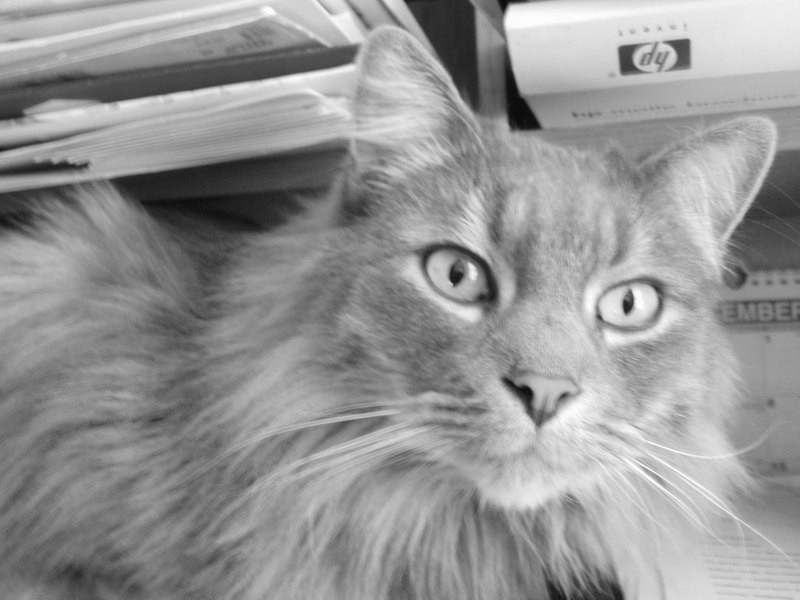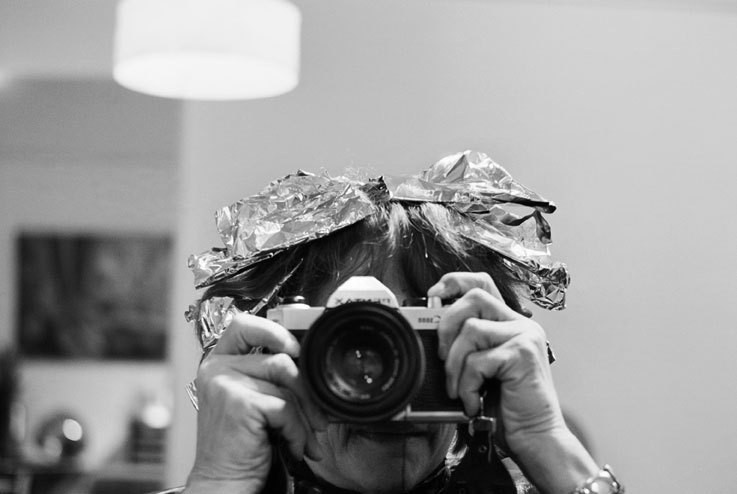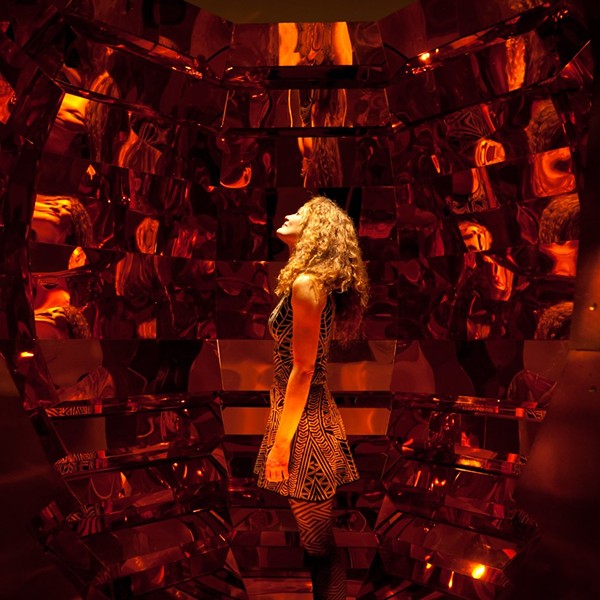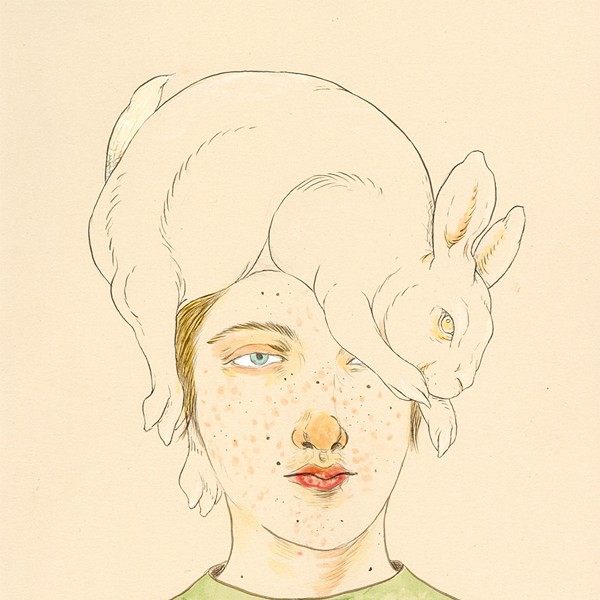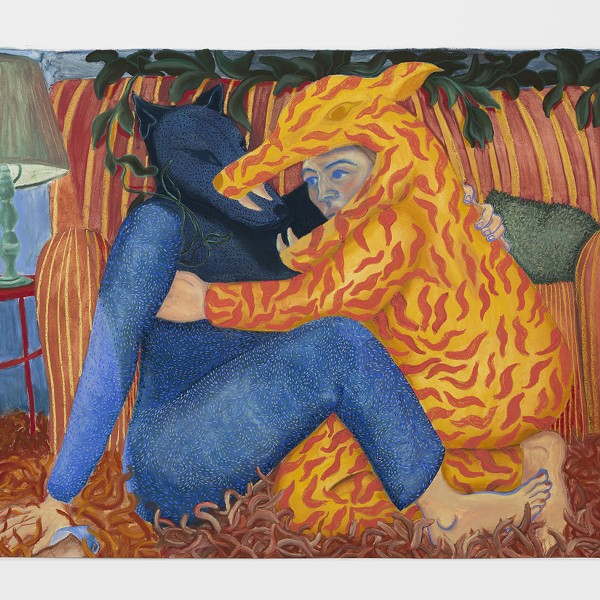“Of course in sculpture...the work has to stand or fall according to what it does with space...It is the space a work creates within and around itself which articulates its strength, its joy, or its suffering.”
—John Berger
A few weeks ago, a bunch of over-life-size fiberglass cats, mounted on black steel posts, arrived on the streets of Catskill. There are two basic variations—the cat is either sitting or standing, stylized tail raised high in the air—and each has been painted or otherwise decorated, and given a cute name, usually a bad play on words like “cat” or “kitty.” They are, apparently, enormously popular. They also bear approximately the same relationship to “art” that McDonald’s has to real food, and are, to my mind, just about as detrimental.
Don’t get me wrong—I love cats. I have one myself, and I’m very attached to him. (He sits curled up on my lap as I type these very words.) Such sentiments no doubt help fuel the popularity of the unfortunately named “Cat-n-Around Catskill” project, but popularity alone is not a proper gauge for the success or failure of a public art project.
It’s a tricky thing, erecting artwork (typically sculpture) in a public space—our society has become so compartmentalized when it comes to culture, that the average citizen will often throw his or her hands in the air, shrugging helplessly when confronted with an example of bleeding edge contemporary art. It’s like stumbling awkwardly into an intense discussion that a few other people have been having for the past hour, when you have little hope of catching up, or even comprehending the primary subject of the conversation. You feel powerless, and then alienated, and more likely than not you’ll be walking in the opposite direction in short order.
This is not only an American phenomenon. Last summer, I was fortunate to visit the Münster Sculpture Project in Münster, Germany. This exhibition was originally inspired by a local public art furor, set off when the city purchased and installed a large, stainless steel kinetic sculpture by George Rickey. It was, and is, pretty damn ugly—not the Rickey I would’ve picked, had I been part of the selection process, and the citizens of Münster were rightly ticked about spending so much public money on it. The curator of the regional art museum, Kasper König, saw the controversy as an opportunity to put together an exhibition intended to bring everyone up to speed on the conversation that had been going on in 20th-century sculpture. It spilled out of the museum itself into the streets and public squares of the city, functioning not only in its intended local function, but attracting the attention of the international art world at large as well. That was in 1977, and König has since, with the full blessing and support of the local government, organized three more editions of this show, which takes place once every 10 years (sort of a contemporary art equivalent of the Oberammergau Passion Play).
It must be working. When I visited last summer, it was striking to me how the general public—certainly not artworld insiders—seemed genuinely attracted to, and engaged with the work on view. One work, by Pawel Althamer, consisted of a narrow dirt path worn through a public park, and across a field of wheat, maybe a half mile long altogether. That was it. Walking along the path, I encountered a group of middle-aged German women, happily chatting among themselves. When I asked them what they thought of the work, they laughed and called it “the path to nowhere.” As it turns out, it wasn’t their first visit to the piece—even knowing that it went nowhere, they were back again to walk it once more.
Such openness to art that can seem counterintuitive, or that poses open, unresolved questions, is the mark of a public that is capable of engaging the world, of experiencing and thinking through things with uncertain answers. For my money, that’s a desirable leading characteristic of citizens in a true democracy as well.
“What’s so bad about the cats?” you may ask. They represent a formulaic, utterly lowest-common-denominator surrender of aesthetics to commerce and to marketing (this is a project sponsored by the Chamber of Commerce, after all). As ingeniously as some of the individual cats may be decorated, they’re just an evolved form of paint-by-numbers, where the most challenging issue is figuring out if you’ve tracked down all the spots calling for color number 15. Cheesy, cat-related title? Check. Humorously cheeky, coyly veiled sexual reference? Check. And so on.
It’s an “art” project that’s as glossy and bomb-proof as the “sculptures” in it, most of which seem to have been dipped in a polyurethane bath that renders them impervious to just about everything, including real thought. Even if you think they’re just fun, a mere diversion, they do positive damage as they become the sole representation of “art” in the community. Two women I encountered on Main Street, who’d just posed for photographs with one of the cats, commented to me, “We love them, they’re so creative. Every one is so different!”
Sad, but true. While I’ll grant that the original inspiration for projects like this—in 1999, when the model was staged as “Cows on Parade” in Chicago—displayed a measure of inventiveness, but since then, the mindless replication of these animal projects has rendered them as imaginative as the average franchise store at the mall. They create the illusion of creativity, without any of the attendant difficulties, without substance. Instead of drumming up community support for good local artists, and cultivating new ways of imagining and using public space, “Cat-n-Around Catskill” merely toys with these ideas, like a cat with a dead mouse.
The viral popularity of these projects is perhaps their greatest danger. In the larger scope of things, Catskill might be excused its event, if only because it was organized by the Chamber of Commerce. But I am sad to report that Hudson has succumbed to the same disease (this time with dogs—their project is called “Best in Show”), which is cosponsored by the local Chamber and the Columbia County Council on the Arts, of all things. It’s as though there weren’t any active, engaged, serious artists in Columbia County—which I know for a fact is not the case. The CCCA should know better than to abdicate its responsibility to these artists, and to the public it’s supposed to serve, by endorsing this dumbed-down project.
The self-congratulatory attention that these animal projects receive, and the easy popularity that they seem to enjoy are slaps in the face to any number of other, less pre-packaged, and more significant artistic projects that are being done in the area, from the Unseen America workshop organized by the Kingston Museum of Contemporary Art, which has been connecting a number of normally overlooked members of the community with the means and the skills to portray their own experiences, to Ellenville’s 10 x 10 x 10, which brings talented artists from around the region to do work in storefront spaces around the downtown, presenting a range of ideas and artistic visions to enliven the community. Painting a bunch of pre-fab animals, no matter how “creative” it may seem on the surface, only ever skims the surface.
Let’s please stop this madness—now!
“Cat-n-Around Catskill” is on view, mostly on/near Main Street in Catskill, through the summer. The “kitties will be looking for a permanent home” at the Cat’s Meow Auction on September 21. (518) 943-0989; www.cat-n-around.com.
“Best in Show” lets the dogs out in Hudson’s business district from July 4 through October 12.
www.artscolumbia.org/bestinshow.html.
“Unseen America” will be exhibited from July 5 through July 31 at the Kingston Museum of Contemporary Art.
www.kmoca.org.







